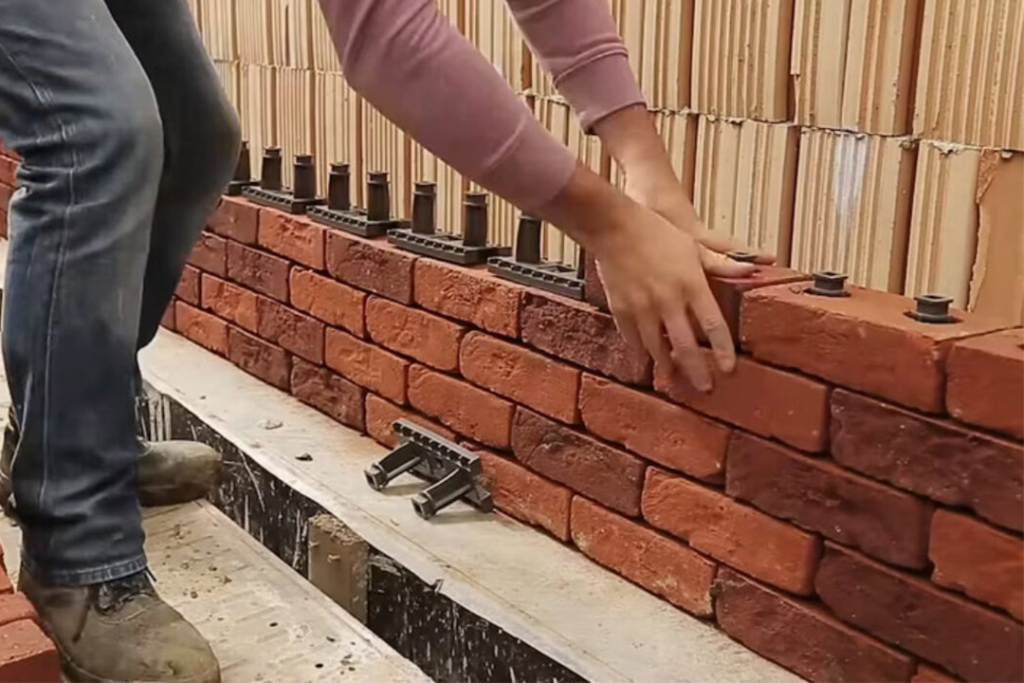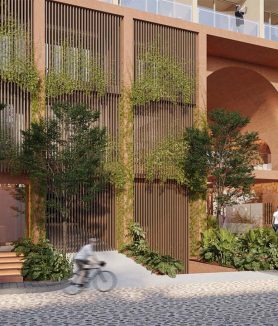The construction industry is undergoing a radical transformation. In the quest for more efficient, sustainable, and accessible processes, new technologies are redefining not only how we design, but also how we build. One of the most disruptive proposals in this evolving landscape is LEGO-like bricks— modular blocks inspired by the iconic toy, promising to revolutionize construction with quick, clean assembly, entirely without cement.
What once seemed futuristic is now becoming a reality, thanks to startups and construction systems that are pioneering a new approach to building homes, offices, and infrastructure more precisely, economically, and ecologically.
LEGO-like bricks: A Modular, Precise, and Adaptable Solution
LEGO-like bricks stand out for their perfect interlocking system, allowing for rapid and straightforward assembly— much like putting together a puzzle. Made from materials ranging from lightweight concrete to recycled polymers, these blocks are designed to adapt to a wide range of applications and environments.
Their modular design not only allows for structures of varying shapes and sizes but also reduces on-site errors, optimizes resources, and streamlines every stage of the construction process.
Real-World Examples: From University Projects to the European Market
Linko (Australia)
Developed by Keagan Howell, a student at the Royal Melbourne Institute of Technology (RMIT), this system uses recycled plastic clips to join the blocks, eliminating the need for cement or nails.
The result: reusable, durable, and more sustainable walls. Its potential to accelerate the construction of social housing has attracted the attention of public institutions and NGOs.
Facadeclick (Belgium and the Netherlands)
Already commercialized in Europe, this system uses high-density polyethylene (HDPE) connectors for a dry “click” assembly.
In addition to enabling material disassembly and reuse, it accelerates construction processes by up to 40%.The system is reinforced with safety bolts and insulating foam to enhance thermal and acoustic performance.
Game-Changing Advantages
- Construction Speed:Assembly without mixing or curing dramatically reduces timelines, allowing structures to be completed in days, not weeks.
- Cost Reduction:By eliminating concrete and reducing labor, projects can see savings of 20% to 30% .
- Industrial Precision:Prefabricated pieces ensure quality and exact measurements, minimizing on-site adjustments.
- Sustainability:The use of recycled materials, minimal waste, and the potential to reuse blocks position this system as a low-impact environmental alternative..
- Accessibility:Easy assembly could enable people without prior experience to participate in self-build projects.
- Energy Efficiency:The injection of insulating material between layers significantly improves thermal and acoustic performance.
New Ways to Build Cities
Beyond housing, these systems are proving useful in a wide range of projects:
- Residential homes and apartment buildings
- Offices, retail spaces, and warehouses
- Retaining walls, bridges, and roads
- Public spaces and urban furniture
Each of these applications benefits from the same advantages: speed, low cost, precision, and adaptability across different scales.
The Future of Construction?
Like all emerging innovations, LEGO-like bricks face challenges — from the need to develop new building codes to overcoming cultural resistance within the industry. However, their growing adoption and the technical validation they’re receiving in countries like Belgium, Australia, and Mexico point to a future where these solutions become part of the new standard.
Modular, lightweight, efficient, and sustainable construction is no longer a utopia — it’s already underway. And initiatives like Linko and Facadeclick prove that the architecture of the future will be more agile, democratic, and respectful of the planet..
LEGO-like bricks not only allow us to imagine new structures but also challenge us to rethink from the ground up how we inhabit and build our cities.












